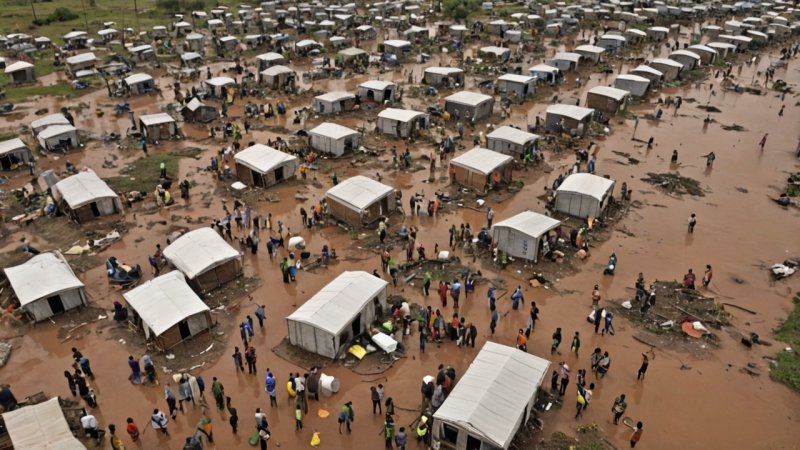In an age where technology can bridge gaps and offer solutions to some of the world's most pressing challenges, innovations in humanitarian technology are transforming how aid is delivered and how communities respond to crises. From natural disasters to refugee crises, technological advancements are playing a crucial role in improving the efficacy, efficiency, and reach of humanitarian efforts. This article explores some of the most significant innovations in humanitarian technology, highlighting their impact and the potential they hold for future initiatives aimed at alleviating human suffering.
1. Drones and Aerial Imaging
Drones have emerged as a game-changer in the field of humanitarian aid. Their ability to access remote or dangerous areas allows for rapid assessment and delivery of assistance. Organizations like WFP (World Food Programme) use drones to map disaster-affected regions, enabling them to identify the most vulnerable populations. Aerial imaging technology also aids in monitoring crops and assessing damage after natural disasters, providing invaluable data to facilitate timely responses.
2. Mobile Health Technologies
The proliferation of mobile phones across the globe has paved the way for innovative health solutions. Mobile health (mHealth) applications are being developed to deliver medical advice, track disease outbreaks, and provide mental health support. For instance, mHero is an initiative that connects health workers in remote areas of Liberia with the Ministry of Health, facilitating real-time communication and data exchange. These technologies enhance healthcare access, especially in rural and underserved regions.
3. Blockchain for Aid Transparency
Blockchain technology is gaining traction in the humanitarian sector for its ability to enhance transparency and accountability in aid distribution. By creating an immutable ledger of transactions, organizations can track the flow of resources and ensure they reach the intended recipients. The World Food Programme has experimented with blockchain to distribute cash-based transfers to refugees in Jordan, significantly increasing efficiency and reducing fraud.
4. Data Analytics and Predictive Modeling
Data analytics plays a crucial role in informing humanitarian responses. By analyzing large datasets, organizations can identify patterns and predict crises before they escalate. Predictive modeling tools can forecast food insecurity, health crises, and natural disasters, enabling proactive interventions. Initiatives like the Humanitarian Data Exchange provide a platform for sharing crucial data, which supports decision-making and resource allocation.
5. Solar-Powered Solutions
Access to energy is vital for effective humanitarian response. Solar-powered technologies are being utilized to provide electricity in disaster-stricken areas, enabling communication, healthcare, and education. The Solar Suitcase is a portable solar-powered system that provides light and energy for medical facilities in remote locations, ensuring that critical services can continue even in the absence of a reliable power source.
6. Virtual Reality for Training and Awareness
Virtual reality (VR) technology is being used to increase awareness and empathy towards humanitarian issues. Organizations like UNHCR (United Nations High Commissioner for Refugees) have developed VR experiences that allow users to experience the plight of refugees firsthand. This immersive approach not only educates the public but also prepares humanitarian workers for real-life scenarios through simulations, enhancing their skills for crisis management.
7. Community-Driven Platforms
Technology is also empowering communities to take charge of their own development. Platforms that facilitate community reporting and feedback allow individuals to voice their needs and experiences directly to aid organizations. U-Report, a social messaging tool developed by UNICEF, enables young people to engage in decision-making processes and share important information about their communities. This participatory approach ensures that aid efforts are more aligned with the actual needs of the population.
8. Artificial Intelligence in Crisis Response
Artificial intelligence (AI) is being harnessed to optimize humanitarian operations. AI-driven algorithms can analyze vast amounts of data to improve logistics, predict needs, and streamline resource allocation. For example, AI can help in the analysis of satellite imagery to assess damage after a disaster, allowing organizations to prioritize their response efforts effectively.
Conclusion
The advancements in humanitarian technology are reshaping the landscape of aid and support. From drones delivering essential supplies to AI optimizing logistics, these innovations not only enhance efficiency but also empower communities to contribute to their own recovery and development. As we continue to face global challenges, the integration of technology into humanitarian efforts will be crucial in ensuring that assistance is timely, effective, and equitable. By staying informed and engaged with these developments, individuals can play a role in advocating for and supporting the ongoing evolution of humanitarian technology.






